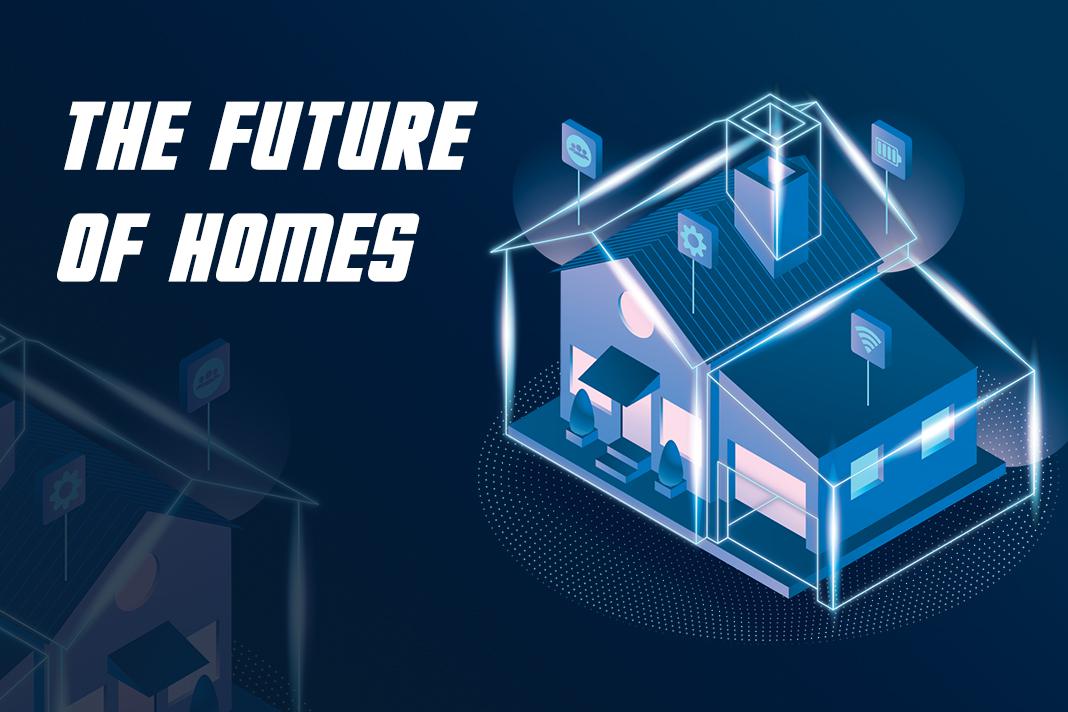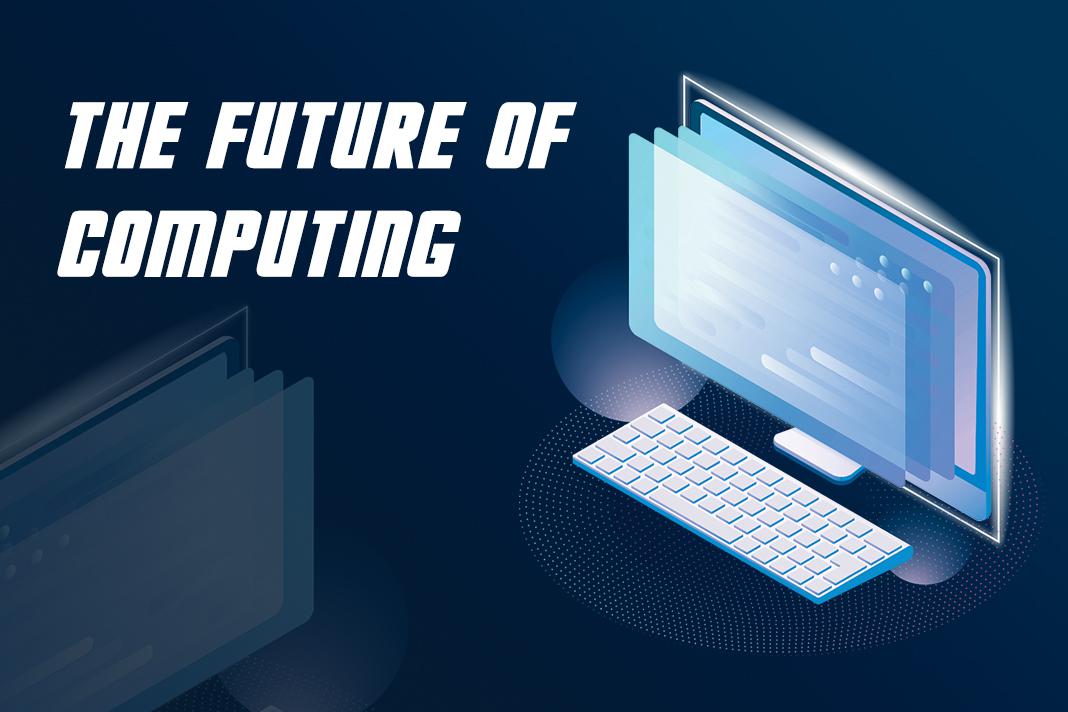More than most, we here at Gadgets see technology’s constant march forward. Today’s smartphone will be tomorrow’s relic, and homes as we know it now will give way to a host of new and exciting tech that will render current smart solutions woefully obsolete. We can’t say we know for certain what the future holds, but we have some ideas. Take a look at them with us, and maybe we’ll manage to get some guesses right.

THE FUTURE OF SMARTPHONES
What’s the first thing that you hold on to when you open your eyes from a good night’s sleep? In today’s day and age, the answer will likely be a smartphone. The mobile device is capable of providing us with practically everything: from hailing a ride, managing and controlling smart home appliances, connecting people around the world, and even disseminating information. With technology changing almost daily, we can’t help but look forward to innovations that the industry has in store for smartphones.
VR and 3D-Sensing Cameras
Multiple rear smartphone cameras have existed in the market for some time now, closing the divide between cameras integrated in phones, and dedicated cameras. With the current developments in the worlds of virtual reality and augmented reality, the possibilities open up immensely. VR cameras are now within consumers’ reach with the arrival of the GoPro Fusion. Soon, brands will integrate VR camera recording on their smartphones to let users share more immersive content online. It will make media sharing more interactive, letting the audience see a 360-degree view of the digital content they are watching, in higher resolution.
Another prediction that some technology enthusiasts see is the adaptation of time-of-flight camera systems which provide an accurate 3D map of the environment. This can be useful in the field of architecture and animation, letting the developers use their phones to capture the information they need for the future rendering of scale models. The technology has already been introduced this year with the Nokia 9 PureView, its five cameras, and time-of-flight sensor. However, in this case, the sensor merely aids in optimizing image quality since further improvements need to be applied to unlock the technology’s full potential. Meanwhile, a report from Bloomberg suggests that the upcoming iPhone will integrate the said camera system as well as a new multi-angle, Face ID sensor that captures a wider field of view. This upgrades face unlock, making it easier to wake the phone even when it is placed on a flat surface.
Built-in Projectors
A large chunk of the workforce relies on smartphones to check their work emails and slideshow presentations. Sometimes, people need to take their work responsibilities beyond the walls of their office, so investing in mobile projectors with smartphone functions is a wise choice. Lenovo introduced the idea a few years back with the Smart Cast, the world’s first smartphone with a laser projector. But to update it for the future, more changes are necessary. These business phones could later on support hologram projection on tabletops or walls, and have improved haptics for more realistic conferences and discussions.
Button-less Form Factor
A futuristic smartphone requires not only an infinite, notchless display but also a buttonless design— it has to be minimalist yet stylish. Nevertheless, eliminating buttons and ports from the device means making it more wireless. Vivo recently introduced these unique features through the Apex 2019, the brand’s very own concept phone. Replacing the USB-C port is the multifunctional magnetic connector that could be used for charging and seamless data transfers.
Other things that consumers should look forward to is battery life, maximizing its capacity up to 6000 mAh, and the addition of wireless reverse charging. Future phones should also get military-grade protection, preventing phones from intensive corrosion and submersion in water, not just the occasional rainshower.
6G Connection
Mobile phone giants Samsung, Huawei, Vivo, Nokia, and Oppo have ventured into 5G connectivity this year, and it’s just a matter of time before they manufacture phones that are capable of yet another mobile network standard. It might not come quickly, but various brands have expressed their interest in venturing into research on 6G. Continuing the capabilities of 5G smartphones, ones that are powered with 6G will support AR and VR systems and greater bandwidth, for a more seamless Internet connection.
Bolder and Better Hardware
They say that the most integral component of any gadget is hardware, and seeing some major refinements from processors to internal storage and RAM should be expected. A few years from now, smartphones will integrate internal parts that work with AI, VR, and AR technologies. This involves 108 MP cameras with greater optical zoom, thermal detectors, self-reconfiguring chipsets, and more. The standard memory speed for smartphones can go up from 4 GB RAM to 20 GB RAM mated with nona-core processors. Sooner or later, the demand for bigger internal storage will also increase up to 1 TB.
Smartphones will continue to be our constant companion for the foreseeable future, but the onward march of technology will ensure that they’ll be increasingly capable of more and greater things.

THE FUTURE OF HOMES
Our home is the most important place in our lives. Since the first humans found shelter in caves, we have continued to search for ways to make our homes more comfortable—something modern technology has lent itself to very well.
Smart homes are the future, there’s no question about that. From smart speakers to IoT enabled lights and appliances, we are living in an era where we can control almost everything at home from the phone in your pocket. Smart devices are just the beginning; the future of the home is something to look forward to.
Alternative Source of Power
It’s no secret that the way we are living now is not sustainable to the planet. With rapid urbanization the need for power is also rapidly increasing. Unfortunately, the current most common power sources are fossil fuels, which are not renewable and release harmful CO2 into the atmosphere. At the rate we are going, the planet will no longer be able to sustain human life in a few generations. Thankfully, several tech companies and universities around the world are studying new and sustainable energy sources to keep our planet safe.
Solar is a consensus among scientists as a great source of energy in terms of sustainability, as it is free and readily available. Solar panels are easily found in the consumer market, and anybody can attach a few solar panels to meet some of the power requirements of their homes. However, current solar solutions have some things to overcome, namely poor weather and slow energy collection, which has led some to think that the future of solar energy is not here on earth but rather on the moon.
Back in 2016, Japanese firm Shimzu proposed building a solar plant on the moon. The idea is to build solar panels around the moon to gather solar energy. This energy would be converted into microwaves and beamed to receiving centers for conversion back into usable power. A lot of time and resources are needed for this idea to work, but it beats the alternative of depleting the remaining resources of our planet.
Robots, Robots, and More Robots
We have always been fascinated with robots. The idea of a machine that does tasks for you is something we have longed for since we realized sitting is more pleasant than working. Home robots such as Rosie, the Jetsons’ lovable robot maid, are very much a part of our pop-culture consciousness, and have long been envisioned as machines that do all the household chores for the homeowner, giving them more time to do other things.
Current robots still do not have full autonomy, but they are getting there. With Google, Microsoft, Boston Dynamic, and other tech companies developing self-learning programs, it would be no surprise to see self-learning robots real soon.
While we wait for fully self-learning robots, companies such as Moley and LG are now leading the way for home robots. Moley has made a robotic kitchen which can cook all your favorite foods via a program. As for the more recognizable brand LG, it has made a number of service robots, namely he CLOi PorterBot, ServeBot, GuideBot and CartBot which debuted at CES 2019. While all of these robots were made for enterprise, the interaction aspect makes it possible to see robots such as these come to a home near you sooner than you might think.
Home Entertainment Goes Online
Before there was Netflix, the world turned to cable TV for most of their entertainment; but with the rise of Netflix, Hulu, and other streaming services, we now see ourselves well and truly in the streaming era. Who wouldn’t want to have a streaming subscription? It’s convenient—all you need is a device with internet access and you’re good to go. Streaming platforms are pushing traditional TV stations to adapt and go the streaming route as well, with even huge names such as HBO, Fox, NBC, and other networks jumping on the bandwagon. This means that soon all television stations will be on the internet either via existing live streaming services or on their own streaming platforms.
Streaming doesn’t end with movies. Films, music, and games will soon be streamable thanks to Google’s Stadia and Microsoft’s xCloud services. Platforms such as Stadia and xCloud remove the need for specialized hardware to play AAA games, which makes gaming more accessible.
But what the future of home entertainment will really hold may not be in the physical but in the virtual. With more and more companies such as Google, Facebook, and HTC investing big money in VR research and development, we may see a future where we spend consuming entertainment in virtual reality.
There are a lot more things possible in the home of the future. 3D-printed food, biometric home security, self-reliant homes, and more. The speed of technology development is staggering, and home technology will continue to develop, continuing to change our homes for the better.

THE FUTURE OF COMPUTING
Computers—PCs in particular—are as ubiquitous a sight now as they have been for decades. We’re used to seeing CPUs under desks, behind counters, at cubicles, and in our homes. As far as devices go, things have progressed more or less predictably, according to Moore’s law, with a few spikes here and there. The machines themselves have remained roughly the same though, just faster, more efficient, and more powerful. Things are changing though, and while Moore’s law, and the increasing density of compute power will likely continue, computing itself is set to see some changes from how we do it today.
The Rise and Fall (and Rise again) of Edge Computing
Right now, as far as the actual computing is concerned, the heavy lifting has usually been done on-site, where the device and computer are. This is one of the reasons chips have been getting denser and denser—people want faster and faster hardware in the same space their old CPUs have always been. PCs, phones—all these computer electronics get more and more powerful, because they are expected to do more and more right on their own. There is a trend moving away from that though. With increasing internet connectivity speeds, computing is seeing a shift from on-site, edge computing, and passing all that on to much more capable, much more massive CPU farms located remotely. We see them already. Offices have the ability to run thin clients and even virtual PCs whose various processes or storage solutions exist in a location other than where the user and their terminal are.
Companies such as Amazon, Google, Microsoft, and a host of other, smaller players all allow people to do this. Even gaming, once the last bastion of powerful, brute-force hardware, hasn’t been spared. Google’s Stadia initiative will soon allow users to play AAA titles from their homes, without the need for a rig with obscenely expensive hardware, as long as they have a fast enough connection to the Internet. It’s exactly like streaming video, except it’s a game. All the important processes happen in a server farm somewhere far away, where electricity and real estate are cheap.
As we move forward, we’re likely to see more and more of these services migrating to the cloud. Mobile gaming, AI applications, and other resource-intensive processes will move from the edge, where the user is, to the cloud, where more capable machines can do a better job. This frees up manufacturers to use devices that use less powerful CPUs that are much more power-efficient, as well as include batteries with greater capacities. Conversely, devices can be made just as capable as they are now, though with smaller footprints.
That’s not where it ends though.
While a lot of processes will move well outside the box that sits at your desk, moving data around still does take resources to manage. Time and money will continue to be a factor, and in some cases, there isn’t enough of either to make cloud computing feasible, and a complete shift to the cloud unlikely, at least with the technologies on the horizon, such as…
The Internet of Things
The Internet of Things (IoT). While generally, these are low-powered devices that aren’t made to do too much computing, there’s the matter of latency. Latency, or the time between an input and the receipt of a reply, is an important matter to consider. Time-sensitive processes, such as self-driving cars, require AI that can make split-second decisions, and relying on off-site computing might not be the most effective solution. Also, the ability of hardware-level AI to perform better than current solutions will make the whole IoT thing much simpler. There are also privacy concerns that edge computing has as an advantage against the cloud.
The realization of Moore’s law is something that is certainly beneficial to these smaller devices. Increasing the density of compute power allows much smaller devices perform much more, while relying less on distant data centers. While this whole thing seems counter-intuitive, it’s simply a matter of solutions trying to take the path of least resistance. Those processes that require more power and are okay with a little latency will do computing off-site, while those that value speed, privacy and don’t necessarily need to be connected, will do their thing on the edge.
What does this all mean?
All of this is to say that computers as we know it, will change a lot, and at the same time, not so much. The experience of the user will be about the same. We will be able to do the things we do now, and more, with AI able to handle more and more of the little tasks we take for granted, possibly with slimmer, and much more power-efficient devices. The back end though, has a world of change coming. Shifting the “thinking” processes from the edge devices to more capable computing, while also keeping some key processes local seems to be the way things are going. The Internet will continue to be an important part of the whole system, and data transfer speeds will be as important as ever.
At the end of the day, we should just look forward to what the future of computing holds for us, rather than get tied up in the details. The future is going to be great, and while it might not play out in the same sci-fi manner we might have come to expect from the movies, it’s still going to be a much more interesting world for us geeks.

THE FUTURE OF CAMERAS
Photography has come a long way since the first images were projected from rudimentary camera obscurae. When Joseph Nicephore Niepce first captured an image and saved it on physical media, the entire world changed.
At the heart of it, cameras are used to capture moments in time. We use the images to share experiences and tell stories about something. Ever since Niepce’s first homemade camera, the technology of cameras hasn’t stopped developing.
AI Cameras in Smartphones
The current trend in terms of camera technology is Artificial Intelligence (AI). You may have heard or read about AI in cameras while browsing for a new phone, as phone manufacturers have been using AI as a major selling point for their phone cameras for several years now. The AI running your phone camera is basically a software algorithm which gathers information on the subject you’re trying to shoot, in order to pick the most appropriate settings with no need for further user input. While capable, this system is not without its limitations.
What’s currently limiting AI in smartphones is the programming and the capability of the
sensors. As more and more sensors and lenses are fitted into smartphones, the complexity necessary to make the AI run properly increases as well. At the start of the phone camera AI revolution, phones could only detect 2D images. With the inclusion of depth sensors in phone camera systems, AI could be programmed to view the world in 3D. Looking forward, phone cameras will continue to develop, and the gap between integrated cameras and dedicated ones will continue to shrink.
Shift from DSLRs to Smaller Form Factors
Being dedicated devices, DSLRs are superb at the job that they do, increasingly versatile and easy to use. While the DSLR is still the go-to camera for professionals and hobbyists, the future of consumer cameras may no longer rest in that space.
Mirrorless cameras offer the same versatility of the DSLR minus the bulk. That’s why it’s generally recommended for those who are just starting into photography or those who want about the same power as a DSLR, without the extra weight.
When they first hit the market, they were behind their DSLR siblings when it came to image quality. However, the big players such as Canon, Sony, and Fujifilm have since managed to place DSLR-sized sensors in their mirrorless cameras, along with interchangeable lenses, to improve mirrorless image quality even more. Another thing to note about mirrorless cameras is the amazing video quality. Mirrorless cameras were among the first to adopt 4K video capability, and might soon even adopt 8K.
Apart from image and video quality, mirrorless cameras were once ridiculed for their use of electronic viewfinders. Unlike the optical viewfinder in DSLR which uses mirrors to see the exact same image going through the lens, mirrorless cameras rely on a digital image on a tiny display in the eyepiece. This caused a slight, but annoying delay as the camera struggled to render the image. Newer mirrorless found a way to reduce lag and produce a much more accurate image on their viewfinders.
The size and convenience of mirrorless cameras will herald its dominance over the bigger DSLR. This isn’t the death knell for the DSLR, though it may be relegated to a specific niche.
More Pixels in Smaller Form Factors
When Fujifilm announced the GFX 100 earlier this year, it blew away most photography enthusiasts. It was a beast of a camera, having a 102-megapixel sensor in a DSLR body. At first glance, you might think that it is a DSLR, but it’s not. The GFX 100 is a mirrorless camera, but despite having a 50 cm sensor, the whole system needed an in-body image stabilizer to fully utilize the 102-megapixel sensor, otherwise images will be blurry in handheld mode.
When the GFX 100 first came out, it was the poster boy for massive pixels in a reasonably portable body. A few months after the GFX100 came out, Samsung announced it had developed a 108-megapixel sensor. For smartphones. Let that sink in for a minute.
Before anything else, the Samsung sensor will not be better than the Fujifilm sensor. The image quality of Mirrorless and DSLR is still going to be superior to something taken on a phone. Furthermore, the massive 100-megapixel number is a bit unnecessary, as even image sensors with 27-megapixel can produce ultra-detailed images. But the capability to cram a 100-megapixel sensor in a phone is still a feat in itself, and goes to show that the future is going towards more pixels in smaller bodies. It may be possible that in the future, we may start seeing sensors capable of capturing images in the gigapixel, rather that megapixel range.
Also published in GADGETS MAGAZINE September 2019 Issue
Words by The Gadgets Team
